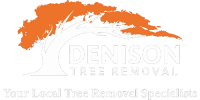Trees add beauty and value to any property, providing shade, improving air quality, and even boosting curb appeal. However, when a tree becomes unstable, diseased, or damaged, it can pose serious risks to your home, loved ones, and surrounding structures. Recognizing the signs of a hazardous tree early can prevent costly property damage or personal injury. If you live in Ledyard, CT, or nearby areas like Preston, Waterford, Stonington, or East Lyme, knowing when to act is crucial. This guide will help you identify the signs that your tree needs emergency removal and what steps you should take next.
Key Takeaway
Trees that show signs of severe damage, disease, or instability should be removed immediately to prevent potential hazards. If you suspect a tree poses a threat, contact a professional tree removal service in Ledyard, CT, such as Denison Tree Removal, for expert evaluation and assistance.
Recognizing Signs of a Hazardous Tree
Structural Damage and Leaning Trees
- A tree that suddenly starts leaning can indicate root damage or instability. Trees naturally grow with some lean, but a recent or worsening tilt can be a red flag that the tree is losing its structural integrity.
- Cracks or splits in the trunk weaken a tree, making it more susceptible to falling, especially during storms or high winds.
- Broken or hanging branches pose a serious danger to pedestrians, vehicles, and nearby buildings, indicating that the tree may not be stable.
Diseased or Decaying Trees
- Trees suffering from diseases often show signs such as discolored leaves, premature leaf drop, or fungal growth, such as mushrooms at the base of the trunk.
- Wood decay can be hidden beneath the bark, but soft, crumbly wood or hollow spots are indications that the tree may no longer be structurally sound.
- Pests, including woodboring beetles and other insects, often infest weakened or dying trees, accelerating their decline and making removal necessary.
Storm Damage and Weather-Related Concerns
- Severe weather, including high winds, heavy snow, and lightning strikes, can weaken or break large branches, leaving a tree unstable.
- Trees with exposed or damaged roots due to soil erosion are at risk of falling, especially in areas prone to storms.
- If a tree has suffered from past damage and continues to lose branches or shows slow recovery, it may be best to remove it before it becomes a hazard.
What to Do Next: Steps for Safe Tree Removal
Assess the Risk and Contact Professionals
- If you suspect a tree poses an immediate threat, do not attempt to remove it yourself. Emergency tree removal requires expertise and the right equipment to prevent further damage.
- A certified arborist can evaluate the tree’s condition and determine whether removal is necessary. Learn more about professional tree care services here.
- In Ledyard, CT, and surrounding areas, Denison Tree Removal offers expert emergency tree removal services to ensure safety and efficiency.
Consider Preventative Tree Trimming and Maintenance
- Regular tree trimming and pruning can help prevent future emergencies by removing weak or dead branches before they become a risk. Learn more about tree trimming services.
- Soil aeration and proper tree nutrition can strengthen trees and prevent them from becoming hazardous. Read about plant nutrition here.
- Preventative measures, including routine inspections, can extend the life of your trees and reduce the need for emergency removals.
Addressing Stump Removal and Aftercare
- After tree removal, addressing the remaining stump is essential to prevent regrowth, pests, and trip hazards. Find out more about stump removal services here.
- Stump grinding and complete removal can improve the appearance of your landscape and free up space for new plantings or landscaping projects.
- Adding a soil conditioner after tree removal helps restore nutrients and promote healthy regrowth in your yard. Read more about soil conditioners here.
Answering Common Questions
What should I do if my tree is leaning after a storm? If your tree has started leaning suddenly, it may have suffered root damage or structural weakening. Contact a professional tree service in Ledyard, CT, to assess whether the tree can be saved or if it needs removal.
Can a diseased tree be saved instead of removed? In some cases, early intervention with proper care and treatment can help a diseased tree recover. However, if the disease has progressed too far, removal may be the safest option.
How quickly should I remove a hazardous tree? If a tree is posing an immediate risk to people or property, removal should be scheduled as soon as possible. Emergency tree removal services are available in Ledyard, CT, and nearby areas.
Ensuring Safety and Professional Tree Care
Removing hazardous trees requires expertise and specialized equipment to ensure safe and efficient removal. Trusting a professional tree removal service guarantees the job is done correctly while minimizing risks to your property. For expert tree removal in Preston, Waterford, Stonington, and East Lyme, CT, contact Denison Tree Removal today.
For a free consultation or emergency tree removal services, visit our contact page. Our experienced team is ready to help you protect your property and maintain a safe, beautiful landscape.

